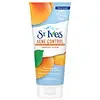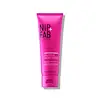What's inside
What's inside
 Key Ingredients
Key Ingredients

 Benefits
Benefits

 Concerns
Concerns

 Ingredients Side-by-side
Ingredients Side-by-side

Salicylic Acid
MaskingWater
Skin ConditioningJuglans Regia Shell Powder
AbrasiveGlyceryl Stearate Se
EmulsifyingGlycerin
HumectantCetearyl Alcohol
EmollientZea Mays Kernel Meal
AbrasiveCetyl Alcohol
EmollientTriethanolamine
BufferingSodium Lauryl Sulfoacetate
CleansingCocamidopropyl Betaine
CleansingGlyceryl Stearate
EmollientPEG-100 Stearate
Cetyl Acetate
EmollientBenzyl Alcohol
PerfumingCarbomer
Emulsion StabilisingCeteareth-20
CleansingAcetylated Lanolin Alcohol
EmollientPolysorbate 60
EmulsifyingParfum
MaskingDisodium EDTA
Benzoic Acid
MaskingSorbic Acid
PreservativePrunus Armeniaca Fruit Extract
Skin ConditioningCI 77891
Cosmetic ColorantSalicylic Acid, Water, Juglans Regia Shell Powder, Glyceryl Stearate Se, Glycerin, Cetearyl Alcohol, Zea Mays Kernel Meal, Cetyl Alcohol, Triethanolamine, Sodium Lauryl Sulfoacetate, Cocamidopropyl Betaine, Glyceryl Stearate, PEG-100 Stearate, Cetyl Acetate, Benzyl Alcohol, Carbomer, Ceteareth-20, Acetylated Lanolin Alcohol, Polysorbate 60, Parfum, Disodium EDTA, Benzoic Acid, Sorbic Acid, Prunus Armeniaca Fruit Extract, CI 77891
Water
Skin ConditioningCetearyl Alcohol
EmollientGlycerin
HumectantGlyceryl Stearate Se
EmulsifyingPerlite
AbsorbentCaprylic/Capric Triglyceride
MaskingStearic Acid
CleansingAmmonium Acryloyldimethyltaurate/Vp Copolymer
Propylene Glycol
HumectantPolyacrylamide
Phenoxyethanol
PreservativeBenzyl Alcohol
PerfumingSalicylic Acid
MaskingC13-14 Isoparaffin
EmollientParfum
MaskingPropanediol
SolventSodium Hydroxide
BufferingDisodium EDTA
Laureth-7
EmulsifyingEthylhexylglycerin
Skin ConditioningDehydroacetic Acid
PreservativeAlcohol
AntimicrobialPolygonum Bistorta Root Extract
Skin ConditioningTocopheryl Acetate
AntioxidantNelumbo Nucifera Flower Extract
Skin ConditioningNymphaea Coerulea Flower Extract
Skin ConditioningCI 17200
Cosmetic ColorantWater, Cetearyl Alcohol, Glycerin, Glyceryl Stearate Se, Perlite, Caprylic/Capric Triglyceride, Stearic Acid, Ammonium Acryloyldimethyltaurate/Vp Copolymer, Propylene Glycol, Polyacrylamide, Phenoxyethanol, Benzyl Alcohol, Salicylic Acid, C13-14 Isoparaffin, Parfum, Propanediol, Sodium Hydroxide, Disodium EDTA, Laureth-7, Ethylhexylglycerin, Dehydroacetic Acid, Alcohol, Polygonum Bistorta Root Extract, Tocopheryl Acetate, Nelumbo Nucifera Flower Extract, Nymphaea Coerulea Flower Extract, CI 17200
 Reviews
Reviews

Ingredients Explained
These ingredients are found in both products.
Ingredients higher up in an ingredient list are typically present in a larger amount.
Benzyl Alcohol is most commonly used as a preservative. It also has a subtle, sweet smell. Small amounts of Benzyl Alcohol is not irritating and safe to use in skincare products. Most Benzyl Alcohol is derived from fruits such as apricots.
Benzyl Alcohol has both antibacterial and antioxidant properties. These properties help lengthen the shelf life of products. Benzyl Alcohol is a solvent and helps dissolve other ingredients. It can also improve the texture and spreadability.
Alcohol comes in many different forms. Different types of alcohol will have different effects on skin. This ingredient is an astringent alcohol.
Using high concentrations of these alcohols are drying on the skin. They may strip away your skin's natural oils and even damage your skin barrier. Astringent alcohols may also irritate skin.
Other types of astringent alcohols include:
According to the National Rosacea Society based in the US, you should be mindful of products with these alcohols in the top half of ingredients.
Any type of sanitizing product will have high amounts of alcohol to help kill bacteria and viruses.
Learn more about Benzyl AlcoholCetearyl alcohol is a mixture of two fatty alcohols: cetyl alcohol and stearyl alcohol. It is mainly used as an emulsifier. Emulsifiers help prevent the separation of oils and products. Due to its composition, it can also be used to thicken a product or help create foam.
Cetearyl alcohol is an emollient. Emollients help soothe and hydrate the skin by trapping moisture.
Studies show Cetearyl alcohol is non-toxic and non-irritating. The FDA allows products labeled "alcohol-free" to have fatty alcohols.
This ingredient is usually derived from plant oils such as palm, vegetable, or coconut oils. There is debate on whether this ingredient will cause acne.
Due to the fatty acid base, this ingredient may not be Malassezia folliculitis safe.
Learn more about Cetearyl AlcoholDisodium EDTA plays a role in making products more stable by aiding other preservatives.
It is a chelating agent, meaning it neutralizes metal ions that may be found in a product.
Disodium EDTA is a salt of edetic acid and is found to be safe in cosmetic ingredients.
Learn more about Disodium EDTAGlycerin is already naturally found in your skin. It helps moisturize and protect your skin.
A study from 2016 found glycerin to be more effective as a humectant than AHAs and hyaluronic acid.
As a humectant, it helps the skin stay hydrated by pulling moisture to your skin. The low molecular weight of glycerin allows it to pull moisture into the deeper layers of your skin.
Hydrated skin improves your skin barrier; Your skin barrier helps protect against irritants and bacteria.
Glycerin has also been found to have antimicrobial and antiviral properties. Due to these properties, glycerin is often used in wound and burn treatments.
In cosmetics, glycerin is usually derived from plants such as soybean or palm. However, it can also be sourced from animals, such as tallow or animal fat.
This ingredient is organic, colorless, odorless, and non-toxic.
Glycerin is the name for this ingredient in American English. British English uses Glycerol/Glycerine.
Learn more about GlycerinGlyceryl Stearate Se is a self-emulsifying (SE) form of glyceryl stearate. Self-emusifying means this ingredient automatically blends with water. It is an emulsifier, emollient, and cleansing agent.
As an emulsifier, Glyceryl Stearate Se prevents ingredients such as oil and water from separating. It is also a surfactant, meaning it helps cleanse the skin. Surfactants help gather oil, dirt, and other pollutants so they may be rinsed away easily.
Emollients help your skin stay smooth and soft. It does so by creating a film on top of the skin that helps trap moisture in.
Learn more about Glyceryl Stearate SeParfum is a catch-all term for an ingredient or more that is used to give a scent to products.
Also called "fragrance", this ingredient can be a blend of hundreds of chemicals or plant oils. This means every product with "fragrance" or "parfum" in the ingredients list is a different mixture.
For instance, Habanolide is a proprietary trade name for a specific aroma chemical. When used as a fragrance ingredient in cosmetics, most aroma chemicals fall under the broad labeling category of “FRAGRANCE” or “PARFUM” according to EU and US regulations.
The term 'parfum' or 'fragrance' is not regulated in many countries. In many cases, it is up to the brand to define this term.
For instance, many brands choose to label themselves as "fragrance-free" because they are not using synthetic fragrances. However, their products may still contain ingredients such as essential oils that are considered a fragrance by INCI standards.
One example is Calendula flower extract. Calendula is an essential oil that still imparts a scent or 'fragrance'.
Depending on the blend, the ingredients in the mixture can cause allergies and sensitivities on the skin. Some ingredients that are known EU allergens include linalool and citronellol.
Parfum can also be used to mask or cover an unpleasant scent.
The bottom line is: not all fragrances/parfum/ingredients are created equally. If you are worried about fragrances, we recommend taking a closer look at an ingredient. And of course, we always recommend speaking with a professional.
Learn more about ParfumSalicylic Acid (also known as beta hydroxy acid or BHA) is a well-known ingredient for treating skin that struggles with acne and clogged pores. It exfoliates both the skin's surface and deep within the pores to help clear out buildup, control oil, and reduce inflammation.
Unlike AHAs (alpha hydroxy acids), salicylic acid is oil-soluble. This allows it to penetrate into pores which makes it especially effective for treating blackheads and preventing future breakouts.
Salicylic acid is also known for its soothing properties. It has a similar structure to aspirin and can calm inflamed or irritated skin, making it a good option for acne-prone skin that is also sensitive.
Concentrations of 0.5-2% are recognized by the U.S. FDA as an over-the-counter topical acne product.
It can cause irritation and/or dryness if one's skin already has a compromised moisture barrier, so it's best to focus on repairing that before introducing this ingredient into your routine.
While salicylic acid does not increase sun sensitivity, it’s still important to wear sunscreen daily to protect your skin.
If you are looking for the ingredient called BHA or Butylated Hydroxyanisole, click here.
Learn more about Salicylic AcidWater. It's the most common cosmetic ingredient of all. You'll usually see it at the top of ingredient lists, meaning that it makes up the largest part of the product.
So why is it so popular? Water most often acts as a solvent - this means that it helps dissolve other ingredients into the formulation.
You'll also recognize water as that liquid we all need to stay alive. If you see this, drink a glass of water. Stay hydrated!
Learn more about Water